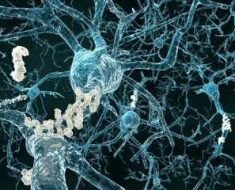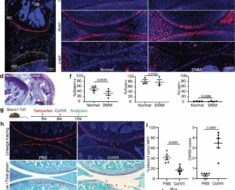NEW YORK (Reuters Health) – Bone marrow activation, as shown on whole body vascular imaging, is associated with early atherosclerosis and metabolic syndrome in apparently healthy middle-aged individuals, researchers say.
“These results place the bone marrow as a central player in the association between metabolic disorders and atherosclerosis – a mechanism that was previously unknown,” Dr. Borja Ibanez of Centro Nacional de Investigaciones Cardiovasculares in Madrid (CNIC) told Reuters Health by email. “What surprised us most is the fact that bone marrow hyperreaction is maximal in the presence of risk factors associated with metabolic syndrome.”
“While it is speculative at this moment,” he said, “we believe that targeting the bone marrow might be a novel therapeutic approach to reduce the massive burden of atherosclerosis in a world where metabolic syndrome – obesity and other factors – is massively growing.”
Principal investigator Dr. Valentin Fuster, CNIC Director, added, “What is fascinating is that we are dealing here with a defense mechanism of the bone marrow to take care of the excess of cholesterol in the artery, but (this) mechanism can turn against the patient if the response is excessive, such as shown in this study when the response is induced by a number of metabolic syndrome risk factors.”
Experimental studies suggest that increased bone marrow activity is involved in the association between cardiovascular risk factors and inflammation in atherosclerosis, Drs. Ibanez, Fuster and colleagues note in the European Heart Journal. However, human data have been sparse.
To investigate the connection, the researchers performed whole body vascular 18F-fluorodeoxyglucose positron emission tomography/magnetic resonance imaging (18F-FDG PET/MRI) in 745 apparently healthy individuals (median age 50.5; 84% men) from the Progression of Early Subclinical Atherosclerosis (PESA) study.
Bone marrow activation – defined as BM18F-FDG uptake above the median maximal standardized uptake value – was assessed in the lumbar vertebrae (L3-L4). Systemic inflammation was indexed from circulating biomarkers.
Early atherosclerosis was assessed by 18F-FDG uptake in five vascular territories, whereas late atherosclerosis was evaluated by fully formed plaques on MRI.
Participants with bone marrow activation were more frequently men (87.6% vs. 80.0%) and more frequently had metabolic syndrome (22.2% vs. 6.7%).
Bone marrow activation was significantly associated with all metabolic syndrome components. It was also associated increased hematopoiesis – characterized by significantly elevated leucocyte (mainly neutrophil and monocytes) and erythrocyte counts – and with markers of systemic inflammation, including high-sensitivity C-reactive protein, ferritin, fibrinogen, P-selectin, and vascular cell adhesion molecule-1.
Even in the subgroup with no systemic inflammation, the associations between bone marrow activation and metabolic syndrome and increased erythropoiesis were maintained.
Bone marrow activation was significantly associated with high arterial metabolic activity (18F-FDG uptake). Further, the co-occurrence of bone marrow activation and high arterial metabolic activity was associated with more advanced atherosclerosis – i.e., plaque burden.
The authors conclude, “Bone marrow activation appears to be an early phenomenon in atherosclerosis development.”
Dr. James Udelson, Chief of Cardiology at Tufts Medical Center in Boston, commented on the study in an email to Reuters Health, “We have increasingly understood the importance of inflammation as a critical component driving the process of atherosclerosis. This study suggests, however, that bone marrow activation identifying cells that can produce inflammatory molecules are present even very early in the process of atherosclerosis, long before any blockages in arteries become severe.”
“From a clinical perspective,” he said, “it does raise the possibility of looking for evidence of inflammation very early in people who might be at risk of atherosclerosis.”
“At the moment, it is critical to screen people according to current primary prevention guidelines, and treat lipids as indicated, as well as urge adoption of healthy lifestyle attributes,” he said. “Down the line, addressing early inflammation may be another layer to add on to prevention.”
SOURCE: https://bit.ly/3IO5fMM European Heart Journal, online March 11, 2022.
Source: Read Full Article





